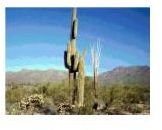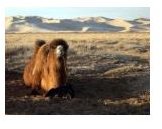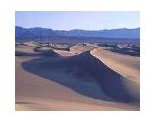Arid & Desert Biomes: Explanation & Activity Ideas
The Facts
Nearly one-third of the Earth’s total land surface is covered with deserts. When we talk about a desert we often think of a hot, dry, lifeless place, but in fact some deserts such as the Gobi are covered with snow for part of the year. Deserts do receive some rain (under 10 inches a year) but it is very unpredictable. Desert biomes also have a vast range of temperatures from very hot in the day to near freezing in the night.
Desert biomes, unlike the other four, face no man-made threats, in fact, it just the opposite. Because of poor land management a once productive land, especially surrounding an existing desert, can soon become a part of the desert.

The thought that desert biomes are lifeless wastelands is a misconception that many students will have. The animals of the desert may have special features that make it possible for them to survive, such as the oversized ears of the jackrabbit. Some fauna, like the kangaroo rat, obtain their moisture from the seeds they eat. For some the desert conditions are ideal, like the collared lizard whose dry scaly skin retains water. Other animals that inhabit the desert biome include snakes, rodents, lizards, insects, and camels. The flora of the desert biome includes cacti, Spanish needles, the poisonous dogbane, the elephant tree and winterfat.
Activities:

1. Find the desert biomes on a world map as either a class or individuals.
2. Divide the class into groups and have them pick two deserts in different parts of the world (i.e. Australia and Africa). Then compare and contrast the flora and fauna found in each.
3. (Older students) Divide the class into groups and assign them a desert. How many different ecosystems can they indentify?
This post is part of the series: Land Biomes of the World
We live in a beautiful world. This series offers several class ideas to keep students understand the five major land biomes.
